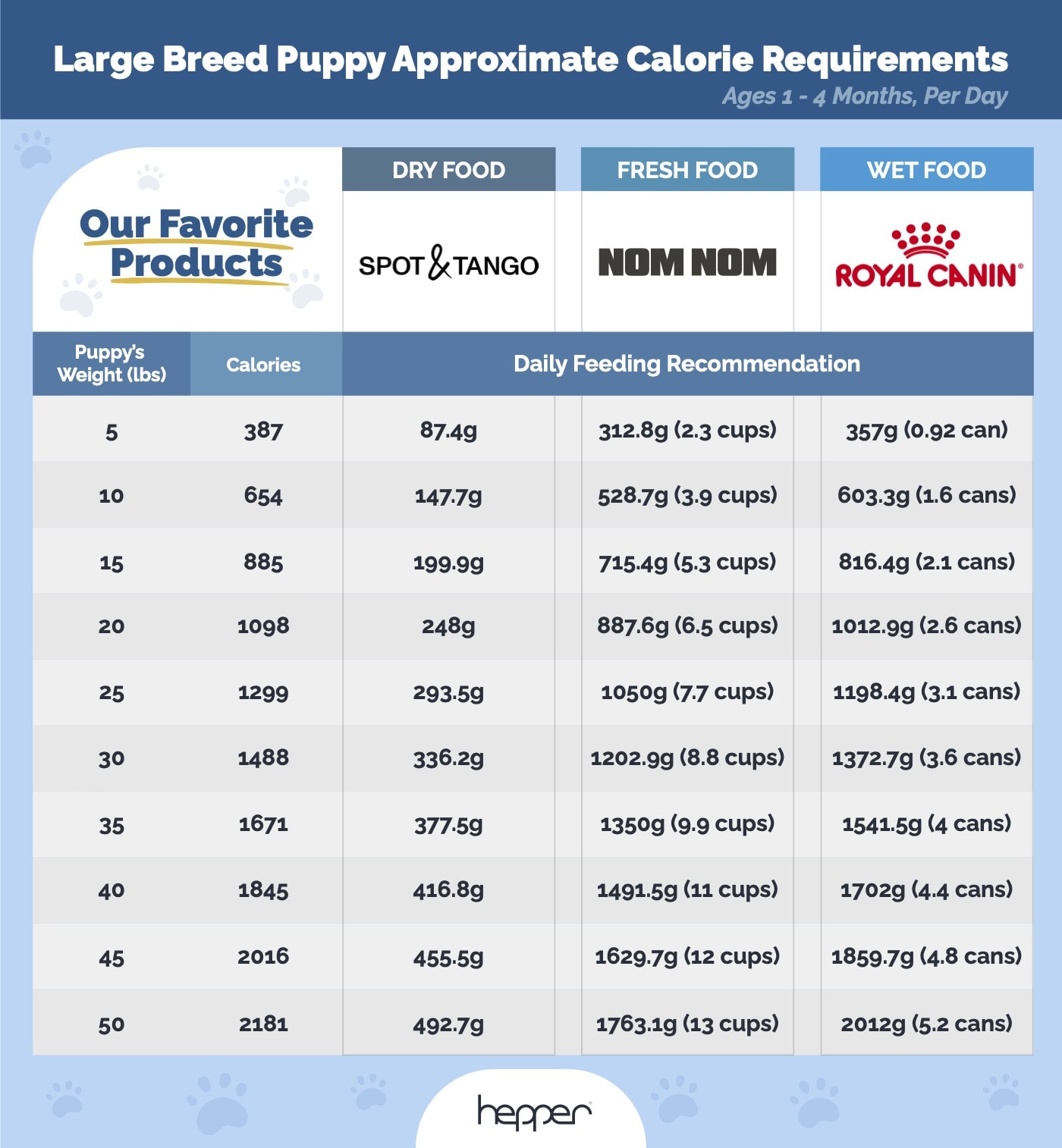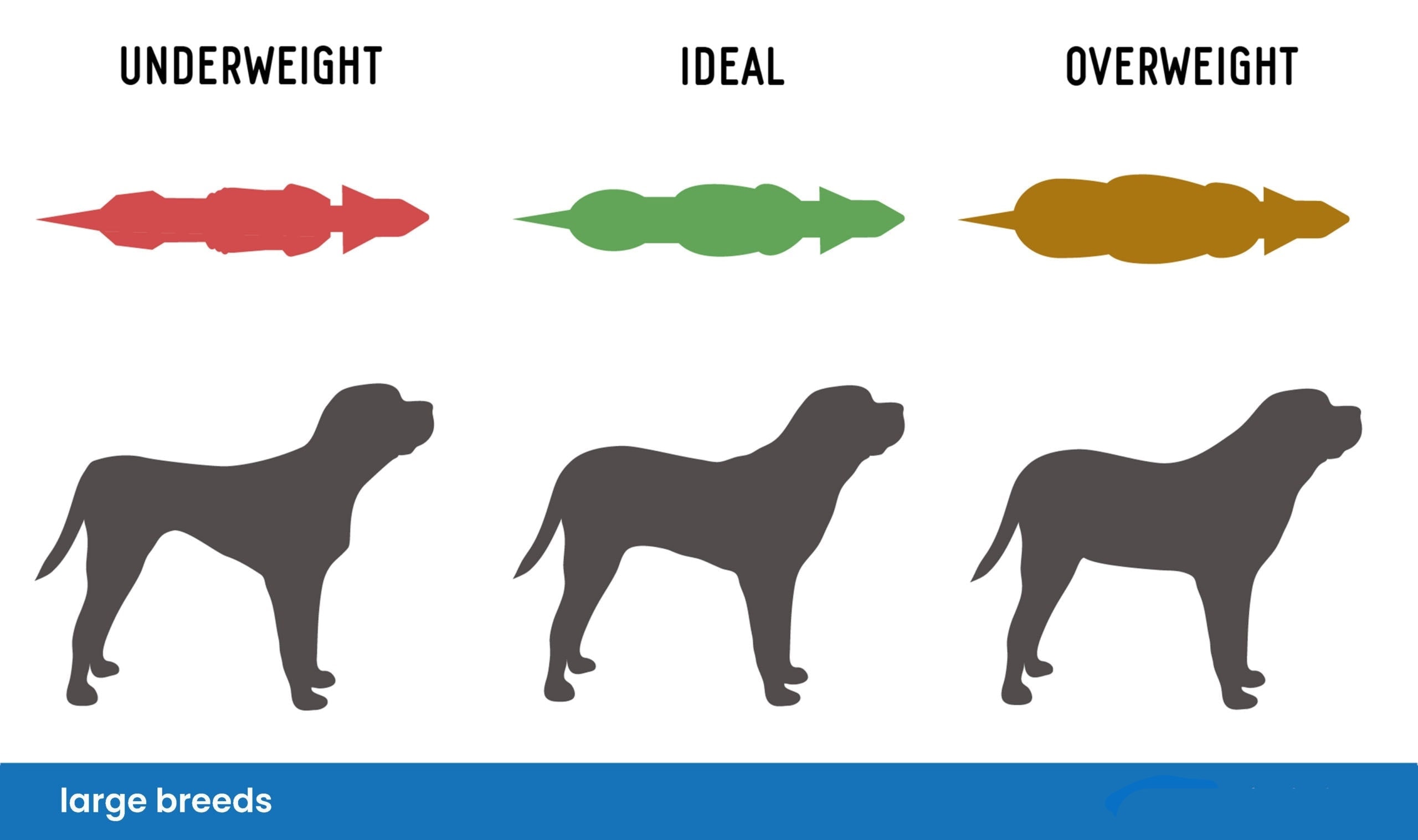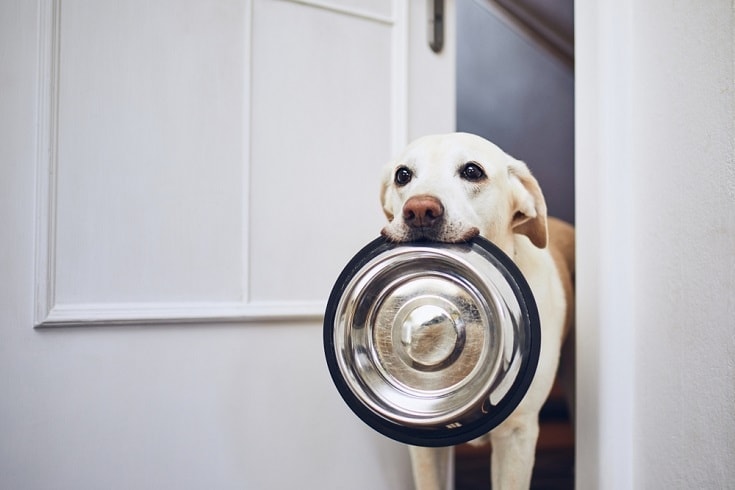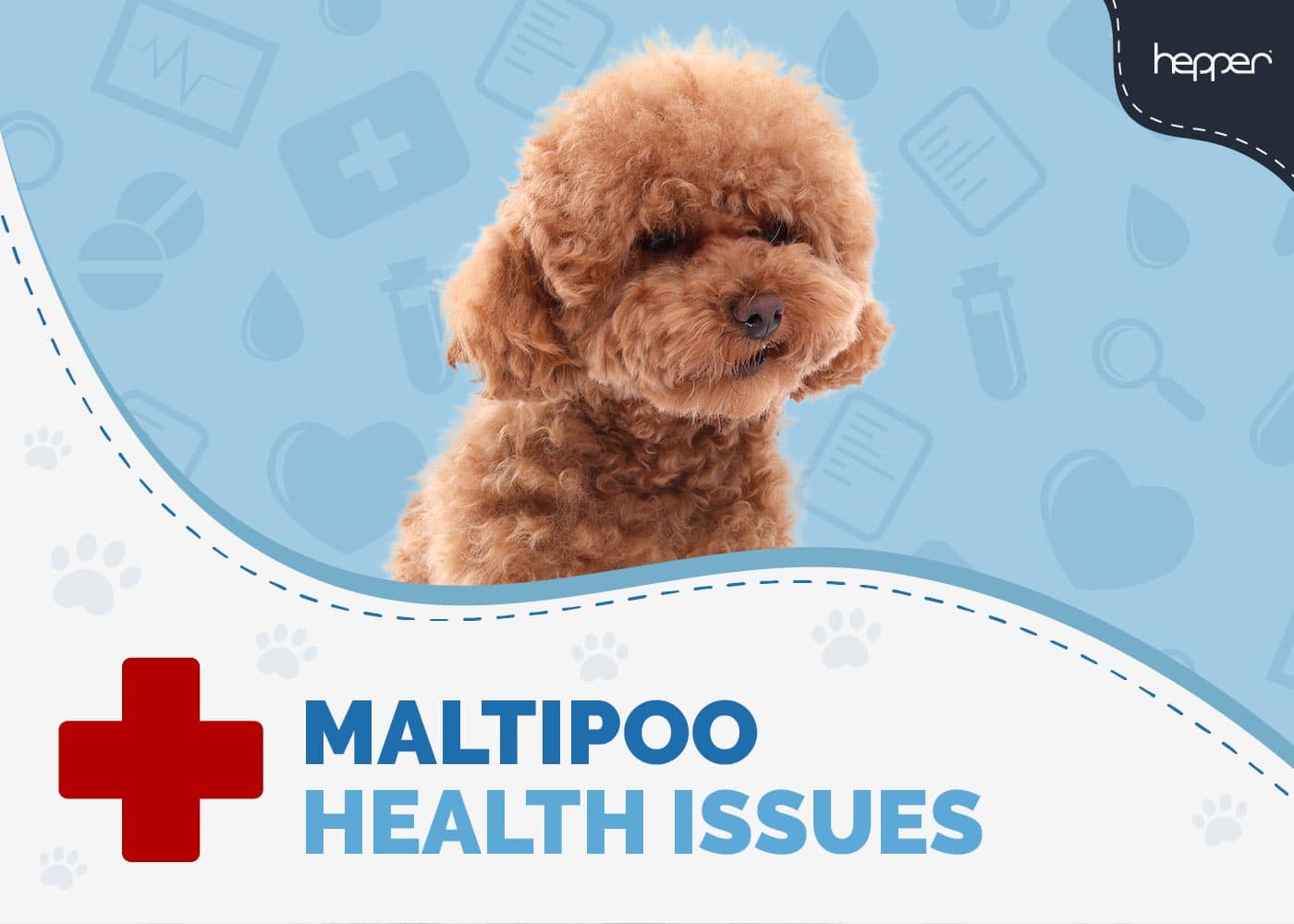How Much Should You Feed a Labrador? Feeding Chart & Health Tips

Updated on

Click to Skip Ahead
One of the areas that cause the most confusion for new Labrador owners is feeding their pet. What to feed them, how often to feed them, and how much you should feed them are all important questions. Ensuring that your dog has a healthy and nutritious diet is the single greatest thing that you can do to impact the health and well-being of your pet.
There is so much to consider, and ensuring that you make the right choices can be tricky. So, to take some of the guesswork out, we’ve put together this comprehensive feeding guide that will tell you all the information that you need to get your Labrador on the right path to a long and healthy life.
We’ll start with a basic puppy feeding chart, and from there, we’ll cover all the other important aspects of feeding your Labrador.
Feeding Chart
Important Note: The amount of calories each dog needs for healthy growth and development depends on many factors, including their age, breed, and activity level. These charts are general guidelines for healthy young dogs, but we recommend confirming them with your vet.

You can also complement this guide by using our dog food calculator here:
The exact amount of calories an individual animal needs to maintain a healthy weight is variable and influenced by many factors including genetics, age, breed, and activity level. This tool is meant to be used only as a guideline for healthy individuals and does not substitute veterinary advice
What to Feed My Labrador Puppy
When it comes to dog food, there are two main schools of thought: commercially prepared and home prepared. Neither is necessarily better than the other, and you should ultimately do whatever you feel is best for your dog. Before you make your decision, however, it is necessary to understand what is involved with both options.
Some people like the idea of feeding home-prepared meals to their Labrador, as doing so allows complete control over everything that their dog eats, but be aware that choosing this option is a great deal of work. You could easily end up spending several hours each week researching meal options and preparing your pet’s meals, and that’s without considering the extra shopping that you’ll need to do.
If a home-prepared diet is something you’re interested in, you need to be prepared to put in the work, because to keep your dog fit and healthy, they will need more than a few choice cuts of meat. It is also something that you should speak to your vet about because they will be able to give you advice and point you in the direction of many resources that will help you. Just don’t be surprised if they also try to talk you out of the idea, as it is rare to find an owner who is committed enough to do all the nutritional research necessary and to keep up this method of feeding up for the long term.

On the other hand, feeding your dog with a high-quality, commercially prepared dog food that has been specifically formulated for your dog’s age, activity level, and health is extremely easy. It is also, in our opinion, a much better choice for those who live busy lives.
When it comes to choosing a commercially manufactured dog food for your Labrador, the first thing that you should look for is a product that provides a complete and balanced diet for dogs of your pet’s age. These have been formulated to give your dog all the nutrients they need in their diet.
Secondly, take the time to look at the label. Dogs thrive on high-protein diets, and the minimum requirement of the Association of American Feed Control Officials is a protein content of 18% for dogs and 22.5% for puppies. It is advisable to always look for a product that has at least 20% protein unless your vet has advised you that your dog needs a low-protein diet.
Avoiding Underfeeding & Overfeeding
Labradors are well known for their love of food, and you will be hard-pressed to find one that will turn down any meal or snack. Scientists have shown that this is actually linked to a genetic fault that essentially stops the Labrador’s brain from switching off the hunger signals after they eat. As a result, the breed is unable to self-regulate their eating, and the only way to stop them overeating is to strictly control the amount of food that you give them and to never allow your Labrador to free feed.

Just as in humans, overfeeding your dog can lead to obesity and a range of other health issues that can significantly impact your dog’s quality and length of life. But there are a few simple things that you can do to ensure that your Labrador doesn’t overeat.
- Read and follow the feeding guide on the dog food. This may sound simple, but far too many people simply never read the feeding guide on their pet’s dog food. Simply look at the label and follow the instructions. Also, remember that the actual amount of food that your dog will need will vary between different dog food brands and products.
- Keep a record of your dog’s eating habits. It is always a good idea to keep a record of everything that your dog is given to eat during the day. This includes not only their meals but also any snacks and treats that they are given, even if they are used for training.
- Avoid feeding table scraps. For some people, this is easier said than done, as they just can’t resist feeding their dogs treats and leftovers from the table. However, meals prepared for humans are often high in salt and oil and not particularly good for your dog. They are also unnecessary calories and over time, can significantly contribute to your Labrador overeating.
- Limit treats to special occasions and for use in training. Much like table scraps, dog treats contain unnecessary calories, so you are best to limit their use.
- Regularly weigh and record your dog’s weight. Ensuring that you regularly weigh your dog and keep track of their weight is a particularly good idea. As we see our dogs every day, we don’t always immediately notice small changes in their weight, and unhealthy weight gain or weight loss can easily go unnoticed. However, by weighing your dog regularly, you will be able to see even small changes in your dog’s weight.
- Understand and monitor your dog’s body condition score. The World Small Animal Veterinary Association has a simple, easy-to-use chart that you can use to help monitor your dog’s body condition.
- Seek assistance from your vet. As with all things related to your dog’s health, when it comes to feeding your dog, your veterinarian is the best person to speak to if you have any concerns about your dog’s weight.
When to Switch From Puppy to Adult Food
Puppies have different dietary needs than adult dogs. For that reason, many of the premium dog food brands have specially formulated puppy food that differs slightly from adult dog food.
Royal Canin, for example, has breed-specific Labrador dry food for adult dogs and puppies. Ideally, you should feed your dog a puppy food until they are 12-15 months old and then transition them to an adult dog food.
The most important thing to remember about transitioning your dog from puppy food to adult dog food is to introduce the new dog food gradually, over 7 to 10 days, by mixing a small amount of new food in with the old. Each day, gradually decrease the percentage of puppy food you give while simultaneously increasing the percentage of adult dog food.

Why Won’t My Labrador Puppy Eat?
There are many reasons that your Labrador puppy might stop eating, and it is something you should keep an eye on as it can sometimes be an indication of a serious health issue. However, it is much more likely that your puppy is simply feeling a little off or has a slight illness, and in most cases, they will be back to normal within a day or two.
Over time, you will get to know your dog extremely well, and even the smallest changes in their eating habits will be noticeable. By then, you’ll also know whether their behavior is indicating something serious or not. However, if you have any doubt about your dog’s health, we recommend that you get in touch with your dog’s vet.
There are a few things that you should keep an eye out for, as they can be indicative of a serious problem:
- Suddenly not eating or trying to eat at all
- Not eating and not drinking
- Vomiting
- Diarrhea
- An absence of bowel movements
How Much to Feed an Adult Labrador
Exactly how much food your adult Labrador is going to need will depend on a combination of their weight and activity level. Bigger and heavier dogs will need more food than smaller dogs, and highly active dogs will also need more than those that lead a sedentary lifestyle.
You will find that the amount of food your Labrador needs will also vary depending upon the brand and type of food you choose to give your pet. Thankfully, all dog food must have a feeding guide on the packaging, and this is the best place to start. You can see an example of this type of guide on the Royal Canin webpage for their Adult Labrador Dry Food.
It is entirely up to you as to whether you choose to feed your dog once or twice a day. If you do choose to feed twice a day, remember to only give your dog half their daily intake in the morning and the other half at night. However, whichever way you chose, it is important to maintain the same feeding pattern, as dogs are creatures of habit, and they will expect to be fed at the same time(s) every day.

Labrador Feeding Guide for Seniors
Many adult dog foods are suitable for both adult and senior dogs, but some dog food brands do make specific senior dog food for dogs 7-8+ years of age.
Feeding a senior Labrador is essentially the same as feeding an adult dog. You should feed your Labrador on a regular schedule and follow the feeding guide on your dog food based on the weight and activity level of your dog.
If you choose to use a dog food that is suitable for both adult and senior dogs, it is important to keep revisiting and checking the amount that you need to give your pet on a regular basis. Although your dog may not lose too much weight as they age, they will almost certainly become less active, and this will impact the amount of food that you need to give them.
Why Is My Labrador Always Hungry?
Labradors love food, it is as simple as that. This is a genetic feature of the breed, and you should expect that throughout the life of your Labrador, they will come looking for food many times each and every day.
This is something you need to expect, and while training your pet not to beg for food will help a little, it is unlikely to be something that you will be able to completely get them to stop doing. Of course, there is one big advantage of the fact that Labradors are so food-obsessed: they respond particularly well to training when it involves earning food treats.

What Foods Are Bad for Labradors?
There are many everyday foods that humans can eat that Labradors — and in fact, all dogs — should avoid because these are toxic or harmful. Common ones include:
- Grapes / Sultanas (highly toxic)
- Chocolate
- Macadamia nuts
- Onions
- Avocado
- Garlic
- Tea and coffee
- Sweet potato
- Alcohol
- Nutmeg
- Lemons
- Lime
- Raw yeast dough
If your dog ingests any of these foods, particularly any grape products, you should seek urgent advice from your pet’s veterinarian.
Conclusion
For a new owner, working out what and how much food to give your Labrador can be tricky. However, once you master the basics, you will likely find that there isn’t that much to worry about.
Besides, given the Labrador’s genetic disposition to constantly want to eat, it’s highly unlikely that you’ll give your dog a meal that they won’t devour in a matter of seconds.
Featured Image Credit: LightField Studios, Shutterstock












